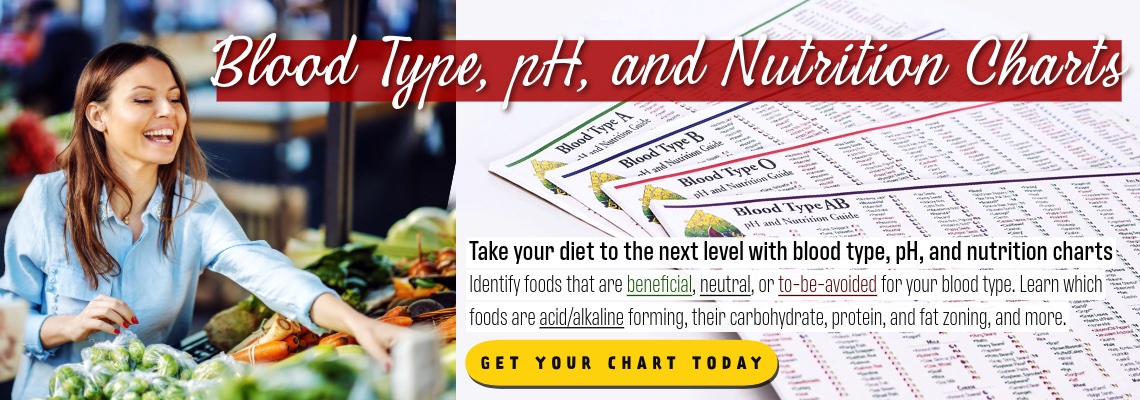 When I first started using natural remedies, I thought that the main difference between modern medicine and natural medicine was the remedies that were used. A popular slogan in those days was “I use herbs instead.” We were choosing to use herbs in place of drugs to treat diseases.
When I first started using natural remedies, I thought that the main difference between modern medicine and natural medicine was the remedies that were used. A popular slogan in those days was “I use herbs instead.” We were choosing to use herbs in place of drugs to treat diseases.
During this early period, when I was just starting out, I would look up a disease in an herb book and see what herbs people had used for it. I was relying on something one of my early herb teachers, Edward Milo Millet, called the historical uses approach. Sometimes I got great results using this approach, but other times I was disappointed as remedies failed to work as I expected.
These inconsistent results continued to frustrate me until I finally realized that natural healing was about more than substituting herbs for drugs. It was an entirely different way of approaching health and disease.
Even though I had switched to using herbs, I was still using allopathy. I was using herbs the same way I had used medications: to counteract disease symptoms. When I had a cough, I took herbs to try and suppress the cough. If I was constipated, I used an herbal laxative instead of a drug laxative. If I had a headache, I wanted an herb to relieve the pain, just like a painkiller would.
My disappointments were never because herbs weren't effective. They were because I was using them ineffectively. I was thinking of herbs as symptom relievers, substitutes for drugs, when I needed to see them as remedies to support the normal healing process. Switching from drugs to herbs, while an improvement, wasn't enough. I needed to change my approach as well.
Once I started to understand this new approach to natural healing I stopped being frustrated by inconsistent results.
A New Understanding of Disease
The understanding that I came to and that has helped me use herbs and other natural remedies so much more effectively was this:
The symptoms of a disease are not the problem—they are the results or effects of the problem, not the cause.
While simple to state, this idea can be hard to understand. To illustrate what I mean try imagining that you’re driving and a warning light starts blinking on the dashboard. It is the low oil pressure indicator, the flashing red light is a constant irritation and reminder that something is wrong. You want the problem to go away. Disconnecting or covering up the light would make the light stop blinking, but the oil pressure would still be low.
The reason I was getting disappointing results was because I was only trying to make the symptoms go away (get rid of the warning light) without understanding what the actual problem was. I never asked what my body was telling me when I had a cough or was constipated or had a headache.
Headaches are a great example of what I'm talking about. Headaches are not really a disease. They are a warning indicator. They can be a sign of dehydration. They are frequently a sign of stress or poor posture. If you push yourself too hard or don't support your body's alignment this can make your neck and shoulder muscles tense, which irritate nerves and inhibit blood flow to the head. Headaches can also be signs of food allergies, indigestion and liver congestion.
A painkiller would stop the pain of the headache and an herbal analgesic could do the same, but neither of them would do anything to address the underlying reason your head is hurting. They are both just covering up or disconnecting the warning light.
Once I realized that the symptoms were not the disease and started to look deeper I got much better results. For each of the different underlying problems of headaches there are corresponding solutions. Hydration, improved posture and relaxation, removing allergens, taking enzymes, decongesting the liver or making dietary changes. Using the historical uses approach was hit or miss. If I happened to pick the right remedy for the cause of the headache, the remedy worked great. If not, I was disappointed. It was my lack of understanding of root causes that was the problem, not the herbs themselves.
What is true for headaches is true for other ailments. Naming a disease isn't enough information to know what’s causing the problem. The name of a disease is just a shorthand for describing a list of symptoms. Without digging deeper all you'll ever get is symptomatic relief.

Drugs Offer Symptomatic Relief
Drug companies know they are relieving symptoms. If you listen carefully to drug commercials, they don’t say that the drug cures the disease. They say that it relieves symptoms. The drug isn’t fixing the underlying problem, it’s just temporarily disconnecting the symptomatic warning lights. The underlying cause usually remains unresolved. With this in mind, it should be no surprise that you won't find anyone who has cured their allergies, asthma, high blood pressure, autoimmune disease, arthritis, diabetes, COPD, Alzheimer’s disease or other chronic health issues with pharmaceutical drugs.
The very fact that modern medicine typically asserts that many diseases are incurable is an admission that the remedies they are providing do not actually cure. If you think about it, it’s good for business. If you actually cure someone, they don’t need your product anymore. On the other hand, if you offer them symptomatic relief, you have a regular, sometimes lifetime, customer.
Unfortunately, using remedies, even herbal ones, to relieve symptoms means you’re never fixing the cause of your problems, which means you’ll gradually get weaker and sicker for the rest of your life. You’ll also need stronger medicines and/or larger doses to control these symptoms as time goes on.
I'm writing this because I'm tired of seeing people struggle with this disease-treatment, symptom-relieving approach to health. I want to help you understand how to shift your thought processes away from treating diseases (symptoms) like I did and to discover how to actually remove the causes of ill health.
The Danger in a Name
There is a problem inherent in trying to name a disease. Imagine that the joints in your hands are becoming more swollen and painful. You might also notice they are a little red and perhaps slightly warmer than surrounding tissues. So, you go to the doctor and tell him this. He examines your joints and says, “You have arthritis.” You now have a name for your problem, but you really know nothing that you didn’t already know. Here’s why.
Arthritis is a Latin word. Arthro means joint and itis means inflammation. So, arthritis means inflammation of the joint. The classic symptoms of inflammation are heat, swelling, redness, and/or pain. Thus, arthritis means you have heat, swelling, redness, and/or pain in your joints. Thus, you told your doctor about your symptoms in English and he told you about your symptoms in Latin. In the end, you’ve learned nothing new about what’s wrong with you.
In a practical example of this problem, I once had a client who had pain and swelling in the area of her pancreas. She spent $800 to receive a diagnosis of idiosyncratic pancreatitis. Again, translating the Latin, idiosyncratic means of unknown origin. Pancreatitis is inflammation of the pancreas. Essentially, she went to the doctor and asking, “Why am I hurting here?” and the diagnosis basically says, “You’re hurting there and we don’t know why.”
It's vital you understand the implications of this. Plant this idea firmly in your mind—a disease name doesn’t tell you what’s really wrong. You have to dig deeper than that or you’re not going to get well. To further help you understand this, let me refer you to a wonderful book on real diagnosis written in 1874 book by the Eclectic Physician John M. Scutter. It’s called Specific Diagnosis. In it, Dr. Scutter states.
…Diagnosis has reference to the classification of disease according to received nosology [a fancy word for the classification of diseases]; that it means naming the affliction…[the doctors] travail in diagnosis until a suitable name is delivered. And then they consult their memory and books for recipes to throw at this name, which to them seems almost an entity. It looks absurd when thus plainly stated, yet it is true to a far greater extent than the majority suppose…
The student would certainly think, from this teaching, that getting a name for a disease, was the first and principal object in medical practice…men pride themselves on their skill in naming diseases—calling it diagnosis. What can be more natural than that medicines should be prescribed at names, when so much trouble is taken to affix them?
This idea of prescribing treatments based on disease names is firmly entrenched in modern medicine, so it’s no wonder that most sick people expect an herbalist and natural healer to do the same thing. Dr. Scutter claimed this practice was not just ineffective, it was actually worthless.
Do you mean to say,” asks the reader, “that the present system of nosology [disease classification] is useless?” Yes, so far as curing the sick is concerned… Not only useless, but worthless—a curse to physician and patient—preventing the one from learning the healing art, and the other from getting well.
To put this problem in a different way, I refer to the pioneer herbalist Samuel Thomson in his book New Guide to Health.
…it is evidently immaterial what is the name, or color of the disease, whether bilious, yellow, scarlet or spotted; whether it is simple or complicated, or whether nature has one enemy or more. Names are arbitrary things, the knowledge of a name is the cumin and anise, but in the knowledge of the origin of a malady, and its antidote, lies the weightier matters of this science. This knowledge makes the genuine physician; all without it is real quackery.
As Thomson says, having a name doesn’t help you understand the underlying root of the problem nor does it tell you the antidote or cure. Without understanding the 'origin of the malady' there isn't an effective way to correct the condition.
The Curse of Modern Medicine
The obsession with naming diseases is worse today than it was in Scutter’s or Thomson’s time. Today, medical doctors have to deal with an incredibly intricate classification system, IDC (International Classification of Diseases) codes. These are alphanumeric designations given to every diagnosis, description of symptoms, and cause of death attributed to human beings. The codes are developed, monitored, and copyrighted by the World Health Organization (WHO).
As a result, medical diagnosis has largely become assigning the proper IDC code to a person’s symptoms. This is absolutely essential for insurance or Medicare billing purposes, which is how most doctors get paid.
Treatment is then rendered using CPT (Current Procedural Terminology) codes published by the American Medical Association, designed to provide a uniform data set that could be used to describe medical, surgical and diagnostic services rendered to patients with that computer code.
This is problematic because it leads to “cookbook medicine.” where there is little to no room for doctors to use their own observation, analysis and approach. These fixed codes and treatments prevent doctors from straying too far from the highly reductionist, symptom-oriented standard procedures. If doctors do so, they risk censorship or worse, the loss of their licenses.
We need to break free of this trap of naming diseases and prescribing treatments based on these names if we want real health. Instead, we need to learn focus on identifying and removing the causes of ill health.
The article is an excerpt from the book I'm currently working on, Strategies for Healing. This is part of the introduction which lays forth my basic philosophy and approach to health and disease. Coming Next: Redefining Symptoms
Steven's Articles
-

-
Barberry and Healthy Personal Boundaries
A thorny shrub for fighting infections and supporting…
December
-

-
The Evidence for Berberine
A yellow alkaloid found in traditional infection-fighting…
-

-
The Sensible Use of Caffeinated Herbs
Kola nuts, guarana, and yerba mate and other herbs…
-

-
The Health Benefits and Problems with Coffee
This popular caffeinated beverage can be beneficial…
October
-

-
Understanding Caffeine & Cellular Adaptation
Preserving the power of caffeine's buzz and the…
September
-

-
Horseradish
A pungent spice for aiding protein metabolism…
-

-
Banaba or Crepe Myrtle
A beautiful tree from Southeast Asia whose leaves…
August
-

-
Monkeyflowers
Flower essences to help see ourselves more clearly…
-

-
Mariposa Lilies
Strengthening the bond between mother and child…
-

-
The Noble Bay Leaf
A common kitchen herb for aiding digestion and…
-

-
Epimedium: Horny Goat Weed
A circulatory stimulant and kidney yang tonic…
July
-

-
The Medicinal and Nutritional Benefits of Apricots
A nutritious fruit and valuable medicinal seed for coughs
-

-
Dogwoods
Asian dogwood is used to stop excessive discharge,…
June
-

-
Neem: The Village Pharmacy
A popular Ayurvedic remedy for dental and immune…
-

-
Spilanthes: The Toothache Plant
A traditional remedy for teeth and gums, as well…

